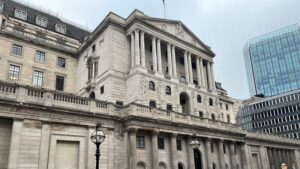The latest Barings Investment Barometer, to give one example, shows a notable surge in the number of advisers moving to shield client portfolios from volatility over the past six months.
The proportion of IFAs advising clients to review portfolios more regularly has risen from 49% to 58%, the study found. But the truth is this kind of activity has taken place against a market backdrop which, according to some leading indicators, has been relatively becalmed: the Vix volatility gauge has been sat at historic lows for several weeks now.
The reliability of such measurements has been called into question – but while short-term price movements have been severe at times, there is no question that equity markets in the UK were broadly resilient in Q1 in the face of all kinds of headwinds.
Industry opinion
It is those headwinds, however, that mean there has thus far been nothing like a wholesale move to put risk back on the table. Schroders flagged this last week in its latest statement to the market, when it said that volatility was having a notable effect on retail investor demand.
Schroders’ own maximiser range is among those offerings that look to harness volatile markets in order to produce higher returns, but the importance of the issue remains paramount whatever the risk appetite: Fidelity’s Trevor Greetham was one of the speakers who raised the subject at this week’s Morningstar Investment Conference, stressing the importance of a diversified portfolio in an environment of lower correlations and higher volatility.
There are several signs that these fluctuations are becoming more pronounced – the most obvious being the sharp changes in commodity prices witnessed since the end of April. Markets today (11 May) can be seen as a suitable microcosm of that trend, miners and precious metals having slid in early trading before rebounding later on.
But it is not just the commodity sector that is exhibiting such signs: the sizeable currency moves seen in the likes of the dollar and the euro prompted one market observer to tell Bloomberg yesterday that forex market volatility is at its highest ever levels.
Add to that the continued concerns over the shape of post QE2 markets, the return of thinner trading volumes over the summer, and even the growing suspicion that calmer markets make a correction more likely, and you have a recipe that may not be so easily digestible in the coming months.
Investors’ next steps
Investors can take solace in the fact that these fears have been flagged for some time now: there are, therefore, products being launched that attempt to cater to such fears. Exchange-traded offerings are proving particularly popular, the recent Source Volatility ETF being joined yesterday by a similar offering from BofA Merrill Lynch and ETF Securities.
On a wider level, ETF detractors will continue to suggest that many products, particularly in the commodities space, contribute to volatility. That debate has this week been extended to mutual funds, courtesy of a Fitch Ratings report which suggests “short-term volatility in credit markets is being increasingly influence by mutual funds”.
Fitch says credit has becoming “more ‘retail’ in nature” and thus active investors are having a bigger impact on daily flows than the traditional buy-and-hold strategies of pension funds and insurers.
Participants in those credit markets have reacted to widespread beliefs in forthcoming base rate rises by cutting duration on their funds; as volatility spikes the likelihood is that short-dated instruments come into favour across the asset class spectrum.
Risk-averse
As a hedging strategy, this makes sense, but risk-averse active investors have other problems too, if recent research from RBS is anything to go by: the bank says IFAs will not recommend 28% of Cautious Managed funds because they view them as too risky.
“Evidence suggests that simply limiting equity exposure to a set limit throughout the market cycle is not the solution to controlling volatility,” the bank adds.
"It is more about having a dynamic strategy in place for knowing when to significantly increase and decrease exposure to equities and other asset classes throughout the investment cycle," said Zak de Mariveles, director of global banking and markets at RBS.
That is, of course, an issue that does not just apply to funds with specific equity weightings. The nature of markets nowadays, and the volatility entailed therein, makes it increasingly difficult to apply such judgements. The conundrum will only become more puzzling should there be a further spike in volatility levels.
“There was a time when a price movement of 1% or 2% was enough to make you sit up and take notice”, one UK equities manager remarked to me last week. “Nowadays a stock can move by 3% or 4% and you sometimes wonder if there is any real reason for it doing so”.







